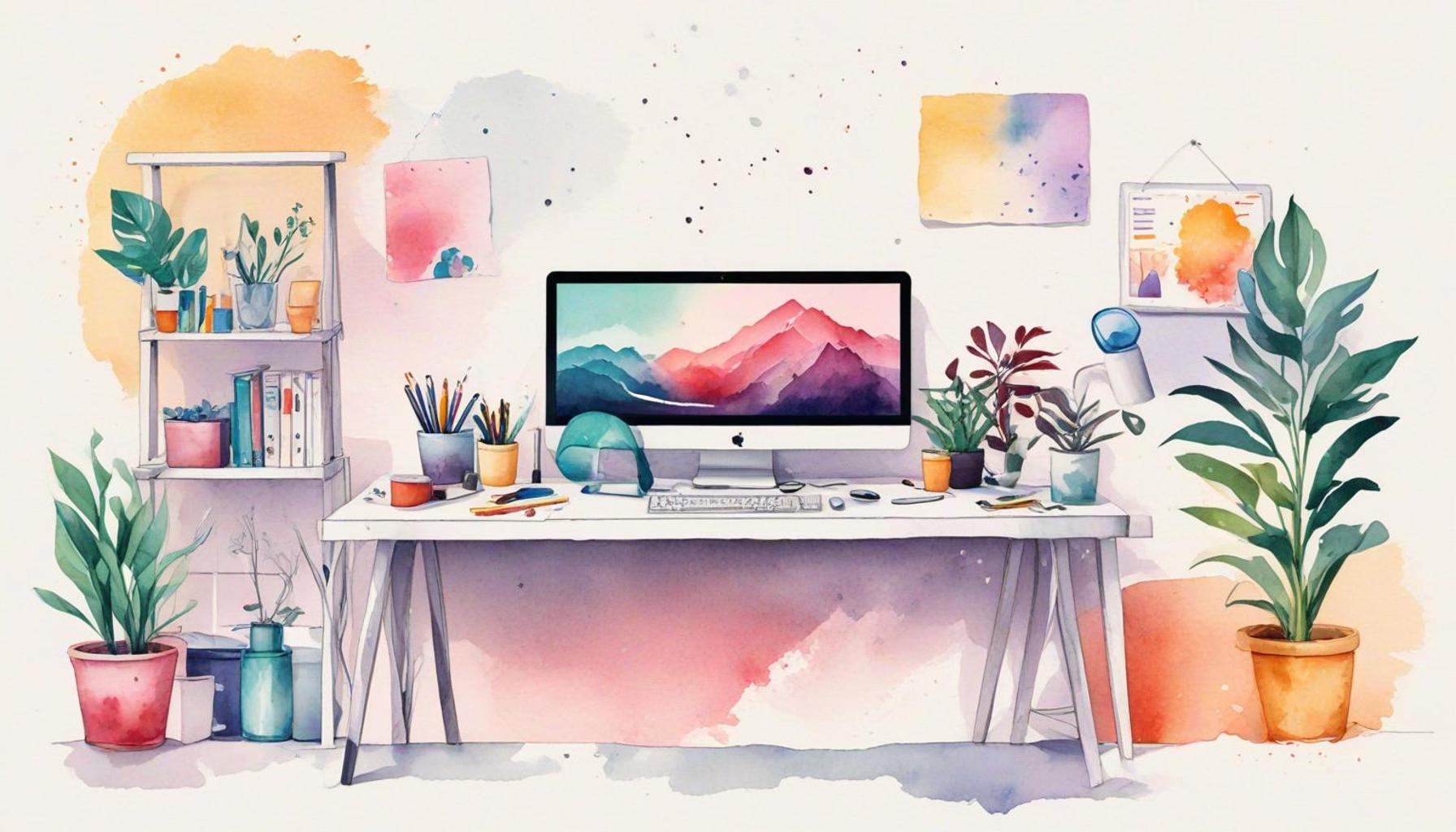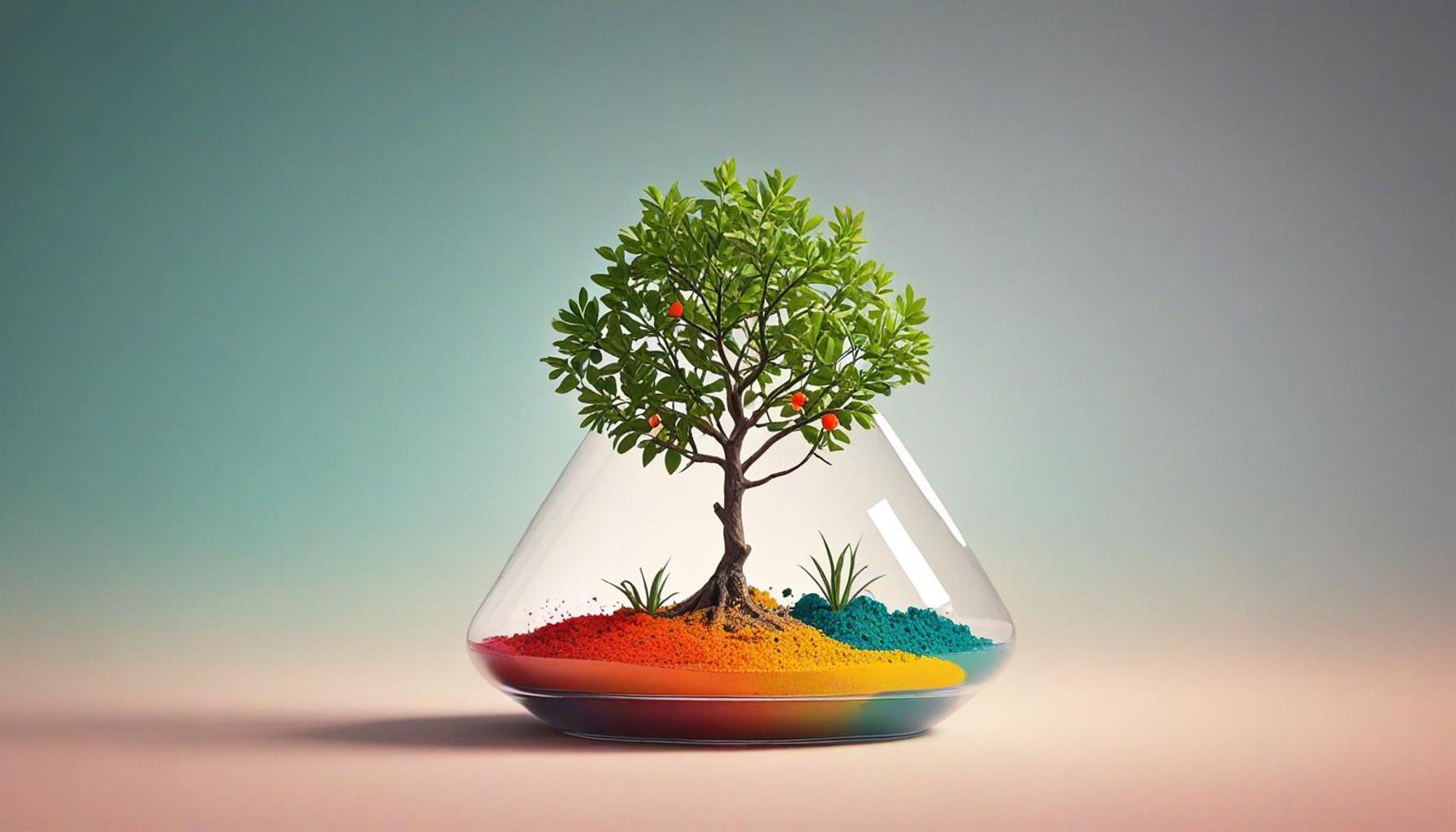The Practice of Minimalism as a Path to an Intentional Life: Deconstructing Excess

The Shift Towards Simplicity
In a world dominated by consumerism and excess, many are beginning to embrace the practice of minimalism. This intentional lifestyle choice focuses on decluttering both physical spaces and the mind, paving the way for a more focused existence. As we navigate through life inundated with advertisements that compel us to buy more, it’s no wonder a movement towards simplicity is gaining momentum.
Understanding Minimalism
At its core, minimalism is about defining what truly matters. It encourages individuals to:
- Let go of unnecessary possessions: This could mean donating clothes that never see the light of day, selling furniture that clashes with one’s aesthetic, or even minimizing digital clutter by organizing files on a computer. The act of physically letting go opens up space for clarity and, ultimately, peace.
- Prioritize meaningful relationships: Minimalists often focus on nurturing fewer but deeper connections. This could mean spending quality time with close friends and family rather than spreading oneself thin socializing with a large group.
- Encourage mindful consumption: Engaging in holistic shopping practices—such as choosing sustainable brands or making thoughtful purchases—leads to less waste and a more ethical approach to consumerism.
As a result, a minimalist approach fosters a greater appreciation for the essentials, leading to a richer experience of life. By being intentional about what we allow into our lives, we can cultivate an environment that supports our well-being, creativity, and peace of mind.
The Benefits of an Intentional Life
Choosing minimalism opens the door to numerous advantages. Among these are:
- Reduced stress and anxiety: A clutter-free space can lead to a clutter-free mind, reducing distractions that contribute to anxiety. Numerous studies suggest that individuals who practice minimalism report lower stress levels.
- Increased focus and creativity: With fewer possessions fighting for our attention, we are free to focus on what inspires us. Many creatives, such as artists and writers, find that a minimalist environment enhances their productivity.
- Enhanced financial freedom: By consuming less and reevaluating spending habits, individuals can save more money. This financial breathing room leads to greater opportunities for meaningful experiences, rather than material acquisitions.
These benefits not only elevate personal well-being but also contribute to a more sustainable planet. The minimalist mindset encourages reducing waste and conserving resources, which is vital in the face of climate change.

A Journey of Deconstruction
Deconstructing excess means reassessing our values and goals. It challenges the pervasive notion that happiness is inexorably linked to material wealth, inviting us to explore deeper connections and purpose. For instance, many minimalists have reported finding joy in experiences rather than things—be it traveling, volunteering, or simply spending time outdoors.
In the following sections, we will delve deeper into how minimalism can serve as a pathway to a more intentional life. By navigating the essentials of life thoughtfully, you can reclaim control over your environment and priorities, ultimately leading you to a more fulfilling existence.
DISCOVER MORE: Click here to uncover effective organizing tips
Reassessing Values in a Material World
The journey into minimalism begins with a profound reassessment of our values and priorities. In a materialistic society, where success is often measured by the accumulation of wealth and possessions, minimalism challenges us to redefine what truly enriches our lives. According to a survey by the American Psychological Association, 60% of Americans report feeling overwhelmed by their possessions, suggesting that clutter isn’t just a physical issue—it’s a psychological one. By consciously choosing to embrace minimalism, we can strip away the layers of excess that cloud our judgment and hinder our personal growth.
Finding Freedom in Less
The act of deconstructing excess is as liberating as it is transformative. When we focus on removing unnecessary items from our lives, we essentially reclaim our time and energy. Those who transition to minimalism often experience what they describe as a weight lifted—a sense of freedom from societal expectations regarding consumption. This newfound clarity allows individuals to:
- Invest time in self-discovery: Minimalism encourages individuals to engage in introspective practices such as journaling or meditation. These activities foster a deeper understanding of personal desires and ambitions that may have been overshadowed by the busy pace of daily life.
- Engage in meaningful activities: With a focus on essentials, minimalists can dedicate time to hobbies or interests that resonate with their values. This shift often leads to new passions or revitalized interests that can enhance overall fulfillment.
- Structure a more mindful schedule: By simplifying commitments, individuals can create a calendar that reflects their authentic priorities, rather than engaging in activities that drain time and energy without providing joy.
As we distance ourselves from a consumer-driven mindset, we also foster relationships that are more intentional. A minimalist approach encourages a deeper engagement with loved ones, where quality time trumps quantity. We learn to curate our social interactions, opting for meaningful exchanges that strengthen our bonds rather than superficial encounters.
Embracing Sustainability
The practice of minimalism is not simply about creating a more organized physical space; it is also intertwined with a commitment to sustainability. In a nation that generates over 292.4 million tons of waste annually, minimalism advocates for conscious consumption that directly addresses environmental degradation. By choosing to buy less and focus on sustainable products, individuals contribute to a more ecological future. The beauty of minimalism lies in its holistic approach to living—it not only enhances personal well-being but also has positive repercussions for our broader society.
As contemporary culture begins to grapple with the ramifications of excess, the question arises: are we merely consuming to fill a void? The minimalist movement encourages us to pause and reflect on whether our purchases align with our genuine aspirations. In the sections that follow, we will explore the various tools and techniques available to embark on this thoughtful journey toward embracing minimalism, deconstructing excess, and ultimately discovering an intentional life that resonates with our true selves.
The Practice of Minimalism as a Path to an Intentional Life: Deconstructing Excess
Minimalism is more than just simplifying your living space; it’s a profound approach toward embracing an intentional lifestyle. As we delve into the core of minimalism, we recognize its role in fostering focus and clarity. By intentionally reducing distractions and excess, individuals can align their daily choices with their true values and goals. This section further explores how minimalism can guide individuals towards living purposefully and mindfully.
One of the central tenets of minimalism is the elimination of material excess. Our society often ties self-worth to possessions, leading to a cycle of consumerism that hampers our mental well-being. By deconstructing this excess, individuals find liberation from the burden of maintaining an overwhelming number of belongings. This shift allows more time and energy to devote to experiences and relationships that truly matter. Moreover, an intentional life encourages the pursuit of quality over quantity, stimulating personal growth and enhancing everyday satisfaction.
Embracing minimalism is also about prioritizing environmental sustainability. With increasing awareness of the consequences of overconsumption, minimalism provides a practical framework for individuals to live sustainably. By significantly reducing waste and adopting eco-friendly habits, we can contribute to a healthier planet. This not only enriches our lives but also models responsible stewardship for future generations.
Additionally, minimalism invites individuals to redefine success. Instead of adhering to societal norms that equate achievement with wealth or possessions, minimalism encourages a focus on personal fulfillment, creativity, and connection. Finding joy in simplicity can lead to more meaningful interactions and a greater appreciation for the present moment. This transformative experience of life can spark profound changes—both personally and socially—inviting others to reconsider their values and priorities.
| Advantage | Description |
|---|---|
| Mental Clarity | Reducing clutter enhances focus and decision-making. |
| Sustainable Living | Encourages eco-friendly practices and reduces waste. |
| Meaningful Relationships | Shifts focus from possessions to experiences and connections. |
In summary, minimalism is not merely about having less, but rather about living more intentionally. It fosters a profound transformation in how we perceive our lives and the world around us. By deconstructing excess, we find paths to fulfillment, purpose, and sustainability. As we continue this exploration, we will uncover various practical strategies and tips for integrating minimalism into daily life, ensuring it aligns seamlessly with personal aspirations and values.
DIVE DEEPER: Click here to enhance your productivity strategies
Practical Steps to Implement Minimalism
Transitioning into a minimalist lifestyle requires a thoughtful approach, as it is not solely about reducing clutter but also about reshaping one’s mindset. Here are several practical steps to aid in the journey of deconstructing excess and embracing intentional living:
1. The 30-Day Minimalism Challenge
One effective method for introducing minimalism into daily life is through the 30-Day Minimalism Challenge. This initiative encourages participants to eliminate one item on the first day, two on the second, and so forth, leading to the decluttering of 465 items by the end of the month. This incremental approach not only provides a tangible way to assess possessions but also prompts reflection on the emotional attachment to belongings. By allowing individuals to face their clutter in small doses, the challenge fosters resilience and critical thinking regarding what may be genuinely valuable.
2. Embrace the One-In-One-Out Rule
The One-In-One-Out Rule is a practical strategy for maintaining minimalism once it is achieved. This principle requires that for every new item acquired, an old item must be donated, recycled, or discarded. This not only curbs unnecessary consumption but also reinforces the decision-making process around acquisitions. By asking critical questions about necessity, functionality, and emotional value, individuals can resist the temptation of impulse purchases that often lead to clutter.
3. Digital Decluttering
Minimalism extends beyond just physical items; it also encompasses our digital landscapes. In an era where the average person spends upwards of 10 hours a day in front of screens, digital clutter can create a significant mental load. Managing digital distractions often involves:
- Organizing emails: Unsubscribing from irrelevant newsletters and deleting old emails can greatly reduce stress and enhance productivity.
- Streamlining digital file storage: Creating a system for organizing documents can help establish a more efficient workflow. Cloud storage services can be utilized for easy access while keeping files tidy.
- Reducing social media consumption: Assessing one’s presence on various platforms and eliminating accounts that do not contribute positively can lead to a more intentional online experience.
4. Mindful Shopping Practices
Mindful shopping is a critical component of minimalism. It encourages consumers to ask themselves, “Do I really need this?” before making a purchase. Research indicates that around 70% of American consumers admit to impulse buying at least occasionally, which often leads to feelings of guilt or regret. To combat this, individuals may consider practicing the 30-Day Rule: waiting 30 days before purchasing non-essential items. This pause can help clarify whether the item is desired for practical reasons or merely for momentary satisfaction.
5. Surround Yourself with Intentional Influences
Creating a supportive environment can bolster commitment to a minimalist lifestyle. Engaging with community groups, social media, or literature centered on minimalism can provide inspiration and accountability. Whether through online forums or meet-up sessions, sharing experiences with like-minded individuals cultivates a sense of community, highlighting that the journey toward minimalism is not one taken in isolation.
As minimalism continues to gain traction in contemporary culture, understanding the actionable steps one can take will lead to a deeper exploration of what it means to live intentionally. The importance of making conscious choices resonates through every aspect of minimalist practice, gradually guiding individuals toward a more enriched existence focused on purpose rather than possession.
DISCOVER MORE: Click here to boost your daily productivity
Conclusion
In a world increasingly defined by consumerism and overstimulation, the practice of minimalism offers a transformative avenue toward an intentional life. By embracing minimalism, individuals pursue not just a decluttered living space, but a holistic mindset where each choice resonates with purpose and clarity. Through tangible strategies such as the 30-Day Minimalism Challenge or the One-In-One-Out Rule, individuals can cultivate the habit of critical reflection regarding their possessions, ensuring that what they surround themselves with contributes to their overall happiness and fulfillment.
Moreover, the shift towards digital decluttering and mindful shopping practices underscores the need to streamline not only physical environments but also mental landscapes. With distractions becoming both ubiquitous and burdensome, simplifying digital spaces can transform productivity levels and enhance well-being. The ability to consciously choose how we consume—whether in life or online—is central to achieving an intentional existence.
Ultimately, the journey towards minimalism is not a solitary endeavor; it’s equally about engaging with a community that supports shared values and goals. As more people commit to this practice, they collectively pave the way for a cultural shift that prioritizes meaningful experiences over material possessions. As you explore the principles of minimalism, consider the empowerment that comes with deconstructing excess and rediscovering what genuinely enriches your life. By taking these steps, the path to an intentional life becomes not only achievable but profoundly rewarding.


